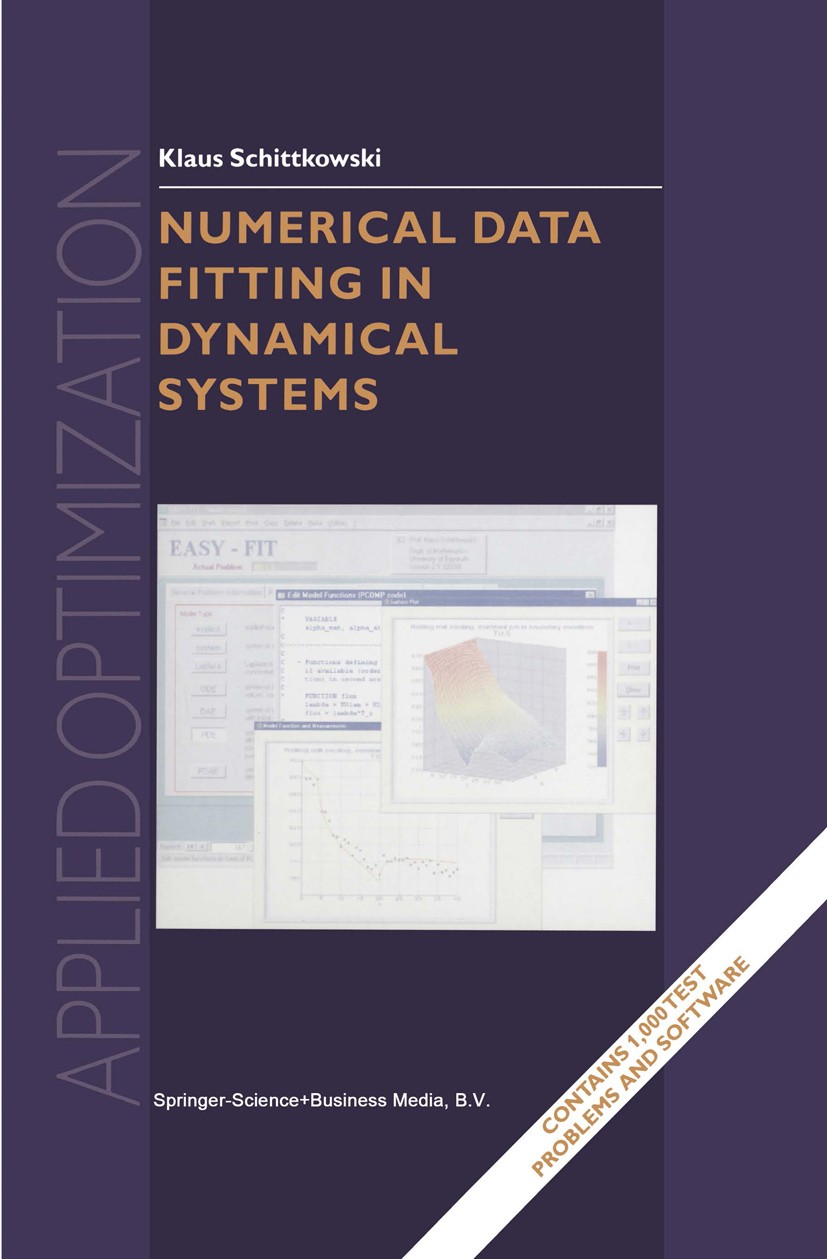| 书目名称 | Numerical Data Fitting in Dynamical Systems | | 副标题 | A Practical Introduc | | 编辑 | Klaus Schittkowski | | 视频video | http://file.papertrans.cn/669/668979/668979.mp4 | | 丛书名称 | Applied Optimization | | 图书封面 |  | | 描述 | Real life phenomena in engineering, natural, or medical sciences are often described by a mathematical model with the goal to analyze numerically the behaviour of the system. Advantages of mathematical models are their cheap availability, the possibility of studying extreme situations that cannot be handled by experiments, or of simulating real systems during the design phase before constructing a first prototype. Moreover, they serve to verify decisions, to avoid expensive and time consuming experimental tests, to analyze, understand, and explain the behaviour of systems, or to optimize design and production. As soon as a mathematical model contains differential dependencies from an additional parameter, typically the time, we call it a dynamical model. There are two key questions always arising in a practical environment: 1 Is the mathematical model correct? 2 How can I quantify model parameters that cannot be measured directly? In principle, both questions are easily answered as soon as some experimental data are available. The idea is to compare measured data with predicted model function values and to minimize the differences over the whole parameter space. We have to reject a | | 出版日期 | Book 2002 | | 关键词 | Algebra; Fitting; Hardware; Mathematica; dynamical systems; dynamische Systeme; linear optimization; model; | | 版次 | 1 | | doi | https://doi.org/10.1007/978-1-4419-5762-7 | | isbn_softcover | 978-1-4757-6050-7 | | isbn_ebook | 978-1-4419-5762-7Series ISSN 1384-6485 | | issn_series | 1384-6485 | | copyright | Springer Science+Business Media Dordrecht 2002 |
The information of publication is updating

|
|
 |Archiver|手机版|小黑屋|
派博传思国际
( 京公网安备110108008328)
GMT+8, 2026-1-1 14:26
|Archiver|手机版|小黑屋|
派博传思国际
( 京公网安备110108008328)
GMT+8, 2026-1-1 14:26


